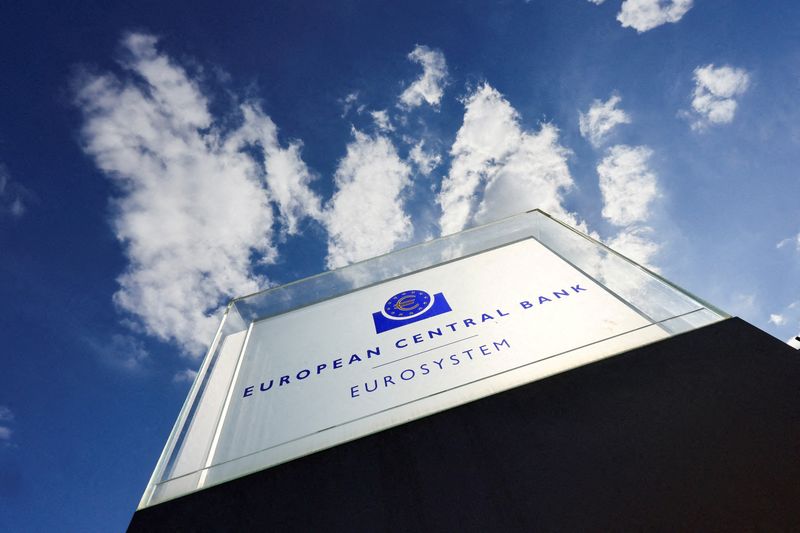Gold prices set for weekly gains on dovish Fed outlook; silver near record high
By Balazs Koranyi and Francesco Canepa
FRANKFURT (Reuters) - The European Central Bank held interest rates at a record high on Thursday but signalled it could start cutting as soon as June, even though stubbornly high U.S. inflation could stop the Federal Reserve from following close behind.
The ECB has kept borrowing costs steady since September but has long signalled cuts were coming into view, with policymakers awaiting a few more comforting wage indicators to accompany benign inflation figures before pulling the trigger.
Despite Wednesday's hotter-than-expected U.S. inflation print, the ECB underlined that message with new wording in its regular statement on policymakers' deliberations.
ECB President Christine Lagarde said that if a fresh assessment increased policymakers' confidence that inflation is heading back to target, then it "would be appropriate" to cut interest rates, a comment taken as affirmation of a June 6 move.
"The ECB has thus effectively announced a rate cut for June," Commerzbank (ETR:CBKG) economist Joerg Kraemer said. "A lot will have to happen to derail the rate cut in June."
Three sources close to the discussion also said that a rate reduction in June was still likely, even if Lagarde was not as explicit as some of her colleagues have been.
But the outlook beyond that was more murky, primarily because of the uncertainty over U.S. inflation and the implications for Fed policy.
Lagarde acknowledged the relevance of developments in the U.S. economy - the world's largest - to the ECB's policy-setting but also stressed the 20-country euro zone's differing economic conditions.
"I don't think you can draw conclusions ... based on the assumption that the two inflation (euro zone and U.S.) are the same. They are not the same," she said.
"We are data-dependent, not Fed-dependent," Lagarde added.
But the sources said a discussion about U.S. developments formed an important part of Thursday's deliberations, and that after June the ECB could pause until there was more clarity over the Fed's rate path.
"The shift in our Fed call implies that the expected ECB cut on 6 June would now come six months ahead of the first Fed move," Berenberg economist Holger Schmieding said after pushing back his call for a Fed rate cut to December from June.
"That the ECB goes first is unusual. But the difference in current economic performance more than justifies that."
Although a strong majority favoured keeping rates on hold on Thursday, Lagarde said a few policymakers had pushed for a rate cut already this month but eventually joined the consensus.
POLICY DIVERGENCE
After the ECB decision, money markets priced around 75 basis points of cuts this year or two moves after June, a slight reduction compared to earlier this week.
"Our central view remains that, from June, the ECB will cut 25 basis points every other meeting until the key deposit rate reaches 2.5%," HSBC (LON:HSBA) said in a note.
Policy divergence from the United States would be justified given their differing economic fortunes.
The euro zone has seen six straight quarters of economic stagnation, the labour market is softening and inflation fell to 2.4% last month, not far from the ECB's 2% target.
Rapid wage growth, seen by the ECB as the single biggest inflation threat, is slowing, investment is weak and bank lending is stagnant - all pointing to a further decline in price pressures.
In contrast, the United States continues to grow above trend, its labour market remains tight and inflation rose more than expected last month, raising the risk of price growth getting stuck.
Some U.S. inflation woes could be global, economists have warned, with rising oil prices and geopolitical tensions bound to push up prices on both sides of the Atlantic.
But consumption in the euro zone is weaker, growth is well below trend and the boost from fiscal spending is also lower, taking some pressures off prices.
